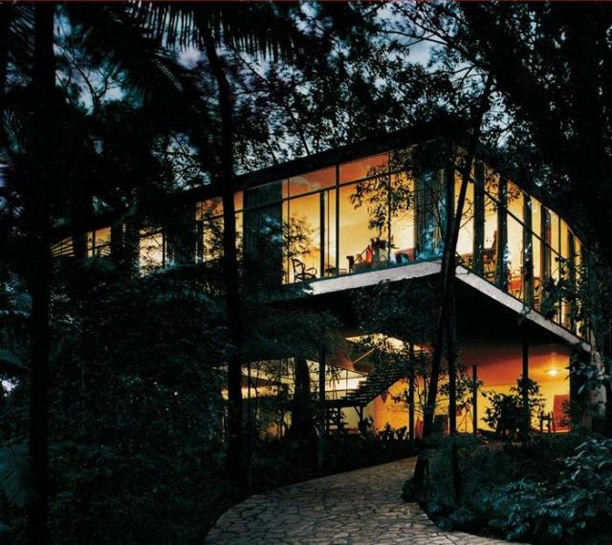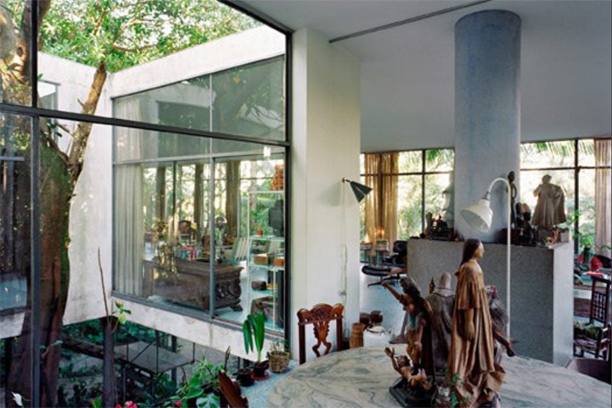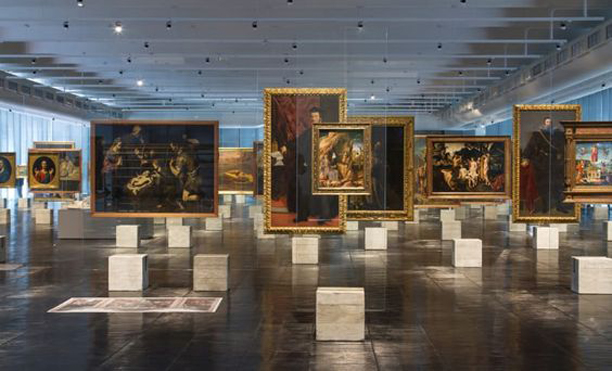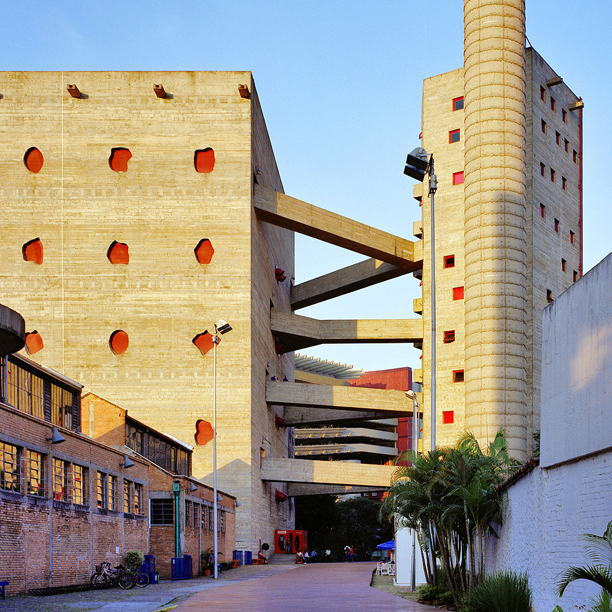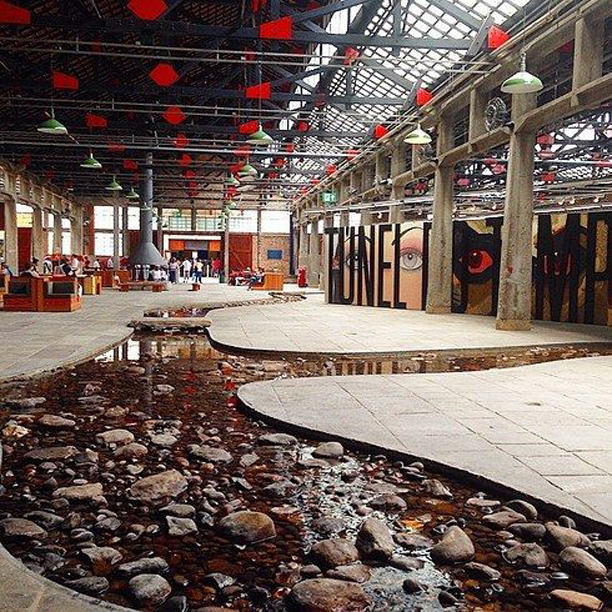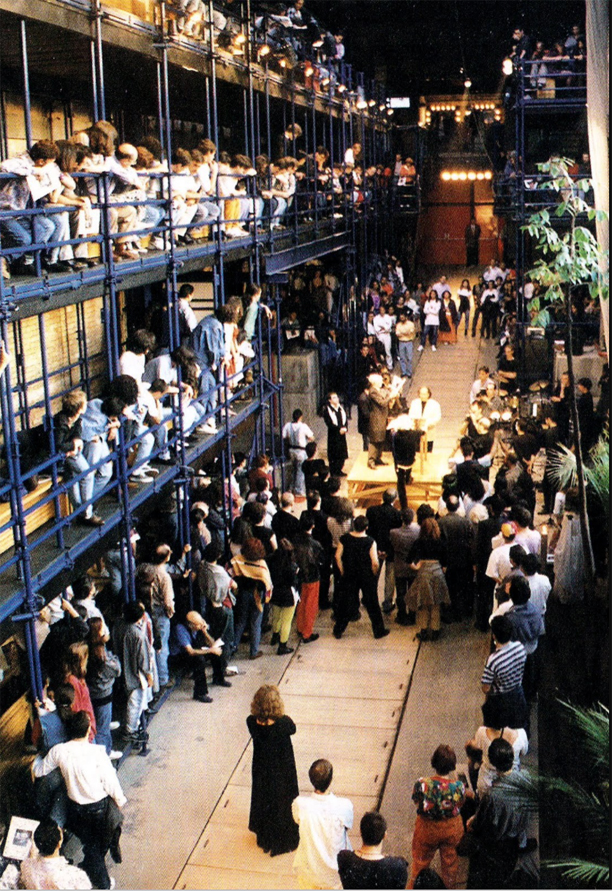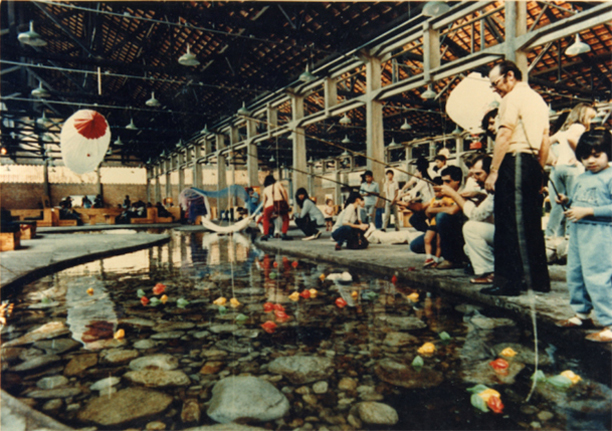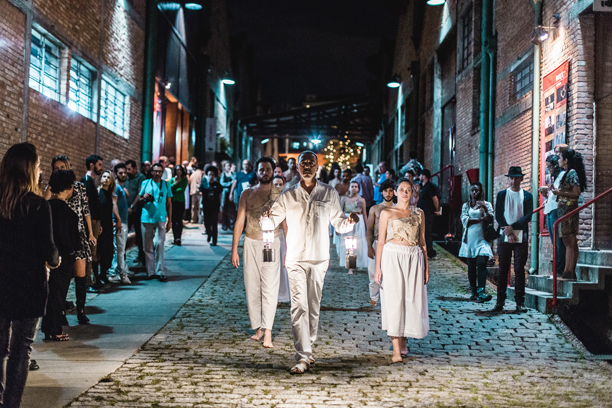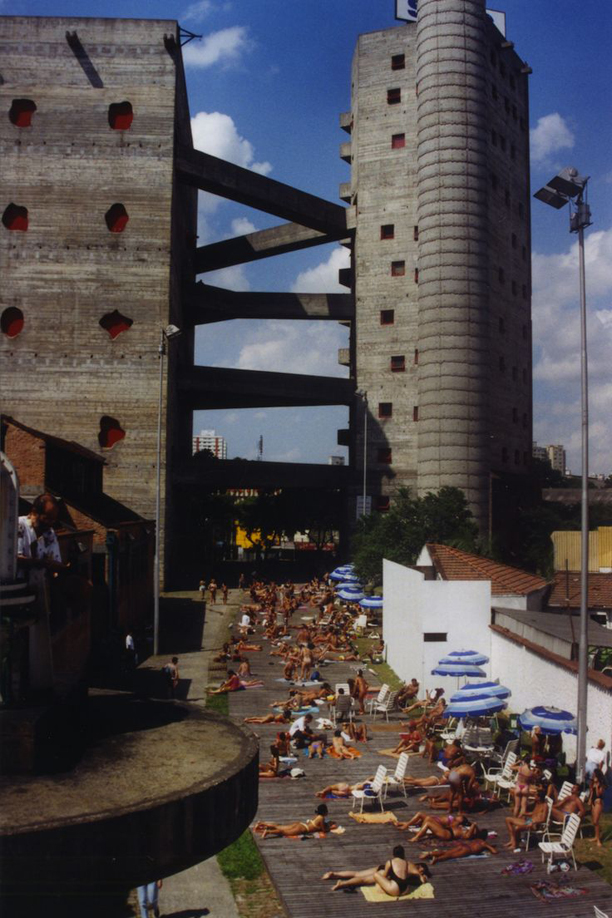Happy Monday, it’s Heather Kilmer with this week’s Nest Studio Design Spotlight. This week we are spotlighting one of the most important 20th century architects, editors, illustrators, furniture designers and curators, Lina Bo Bardi. Her bold, distinctive and prolific work successfully integrates the values of the modern movement with popular culture. Living the majority of her professional life in Brazil, Bo Bardi designed an astonishing variety and number of projects ranging from private homes, museums, office buildings, theaters, churches and cultural centers. Her buildings are vibrant when inhabited and come to life with the energy, diversity and creativity of the people who occupy them.
In 1951, Lina designed her private home in Sao Paulo. Here, nature, art, handmade crafts, toys, collections and chairs–from peasant stools to Eames and Le Corbusier chaise lounges–all co-exist in playful harmony. Of her residence, Lina Bo Bardi writes:
No decorative or compositional effect was sought in this house, as the aim was to intensify its connection with nature, using the simplest means possible, in order to have the minimum impact on the landscape. The problem was to create an environment that was physically sheltered, i.e. that offered protection from the wind and the rain, but at the same time remained open to everything that is poetic and ethical, even the wildest of storms . . . . This house represents an attempt to achieve a communion between natures and the natural order of things.
In 1957 Lina Bo Bardi constructed the modern iconic Museum of Art Sao Paulo (MASP). The above ground museum component is a floating glass volume supported by two red monumental concrete beams. Visitors approach the building through a public area underneath the main structure known as “free span” on grade with the surrounding pedestrian sidewalk. The museum vertically connects its underground space with the floating museum through a glass elevator. Lina’ intent was to create a portal between sidewalk and artwork, interior and exterior, challenging the notion that art is should be inaccessible.
Design intent is also evident in MASP’s interior. To reinforce its transparency, there are no solid partitions in the main exhibition space. All artwork is displayed in an open area, held by glass and concrete easels designed by Bo Bardi and centrally places artwork rather then relegating it to the museum’s perimeter.
Bo Bardi’s SESC Pompeia cultural complex in Sao Paulo is revered for its tectonics as well as its democratization of space. Built on a derelict factory site, Bo Bardi kept the old complex brick buildings, preserving its industrial memory, but removed interior partition walls to create a fluid space. On the remaining plot of land in the industrial village, Bo Bardi erected a shockingly Brutalist complex of two high towers and a tall chimney all built in raw concrete. In contrast to the old factory space, this complex enters into open competition with the urban environment and responds to it contextually. The compact tower houses a swimming pool and showers and the larger volume houses stacked gymnasiums. The two towers are interconnected by either Y- or V-shaped open-weather bridges and gangways. The architecture’s own playfulness becomes evident by virtue of its circulation, form and the use of vibrant color juxtaposed with its gray building mass.
SESC Pompiea was conceived with a capacity of up to 15,000 multigenerational visitors per day. Its program houses soccer, swimming, theater, ceramics, photography, dance, art, and concerts. Old men play chess, people read newspapers and children play with building blocks, you can sunbathe on a boardwalk called “the beach” or simply sit and watch the passing scene. The complex accommodates an evolving sprawl of planned and spontaneous activities. It is extraordinary how physically unchanged spaces have the flexibility to completely change in atmosphere and quality depending on the time of day, event and use.
